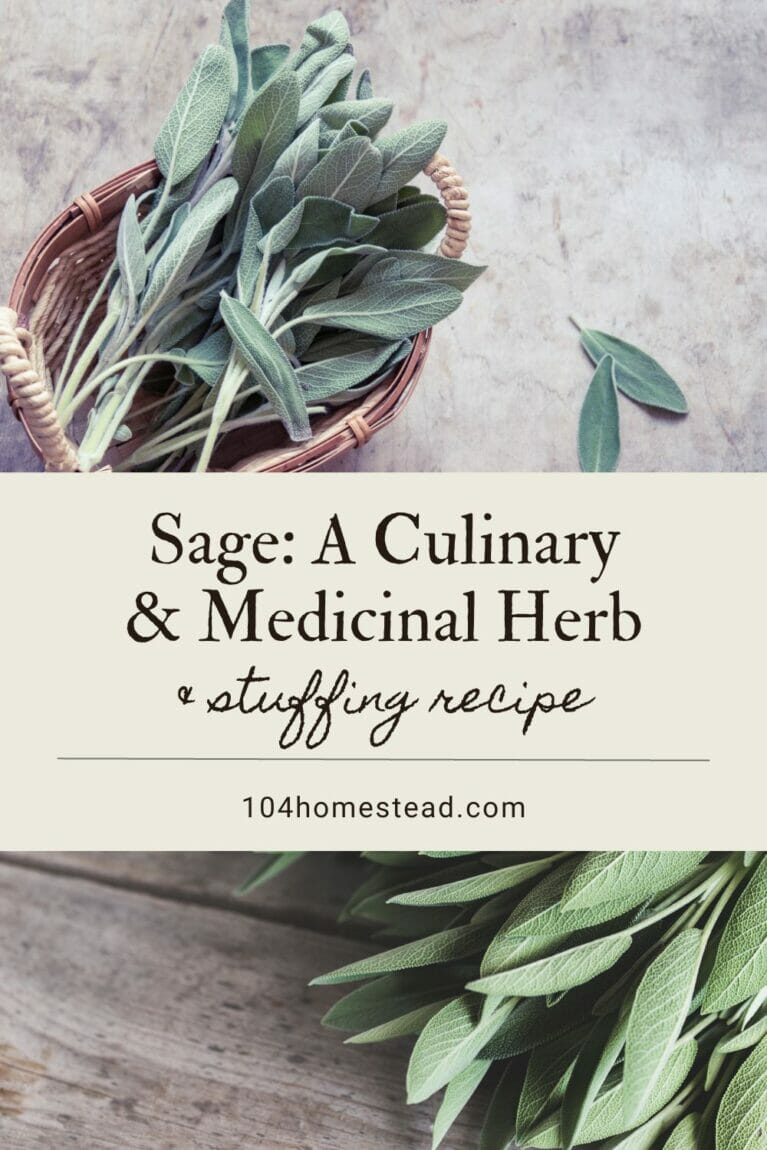Sage: A Culinary & Medicinal Herb [+ Thanksgiving Stuffing Recipe]
Sage is a hardy perennial herb with medicinal properties. It also makes delicious Thanksgiving stuffing. I have the recipe for you!
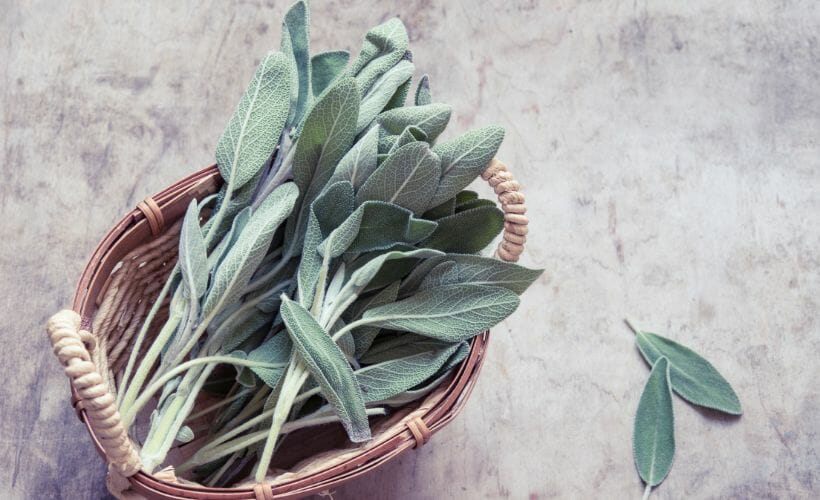
Sage (Salvia officinalis) is commonly referred to as common sage or garden sage, but “common” doesn’t do it justice and deserves a bit of space in the garden.
Don’t worry; forming a 2′ ball at full size won’t take up much space. Its woody stems and soft, silver leaves can be planted in an ornamental garden, and none would be the wiser. It is a perennial plant, so you need only plant it once, and you can enjoy it for 3-4 years before it begins to look lackluster.
How to Plant Sage in Your Garden
Although sage can be grown from seed, the best way to start it in the garden is to make friends with someone who already has an established plant. Seeds or cuttings should be started indoors eight weeks before the estimated spring frost. Once the danger of frost has passed, seedlings or rooted plants can be moved outdoors. Space them approximately 2′ apart in a sunny location.
If you are planting your sage in a vegetable garden, it makes an excellent companion to carrots and cabbage, but don’t plant too close to cucumbers. The potent aroma can actually change the flavor of your cucumbers.
After the first season of growing sage, you can begin to harvest lightly. By the second year, you can safely trim off more to enjoy indoors. To harvest, trim the stem (no more than 2/3 the stem length), then strip the leaves. It can be frozen or dried, but it’s best used fresh for culinary purposes.
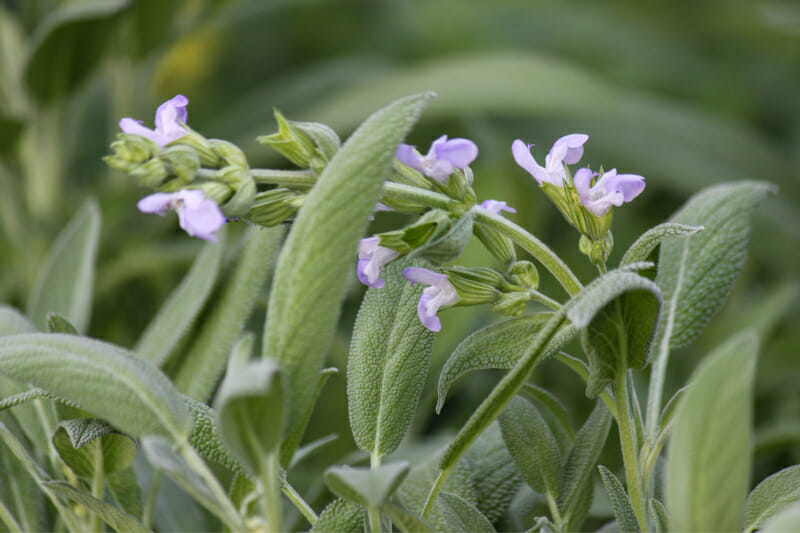
Medicinal Uses for Sage
Stomach Issues
Sage is used for digestive problems, including loss of appetite, gas, stomach pain, diarrhea, bloating, and heartburn.
Sore Throats
A sage gargle is my go-to home remedy for sore throats. To make a gargle, steep a pinch of leaves into a couple of ounces of boiling water. Once it has cooled, remove the tea ball and add a splash of apple cider vinegar. Gargle the remedy until the glass is empty. Repeat two or three times a day until the pain is relieved.
Cold Sores & Canker Sores
Sage leaves placed on cold and canker sores may help relieve discomfort and aid in healing.
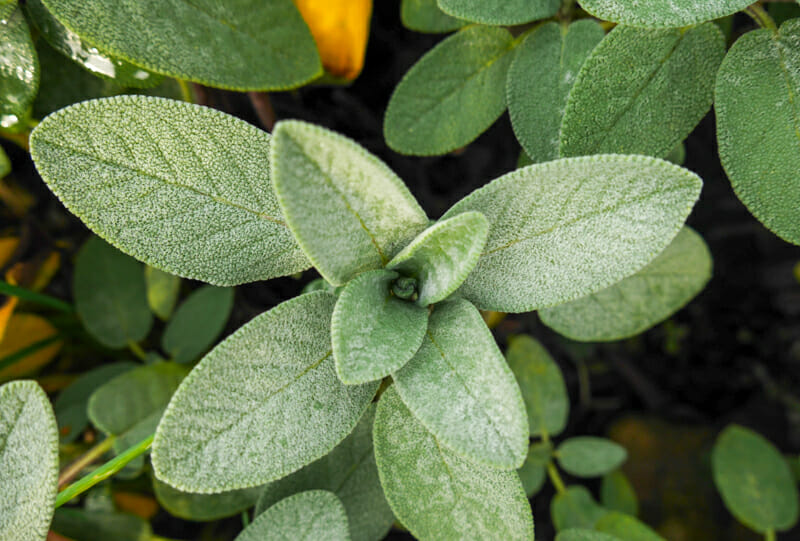
Culinary Uses for Sage
Sage goes beyond flavoring when used in recipes. It also aids in digestion. Although it can be used in sauces and cheeses, stuffing is the food most associated with sage. I find that sage doesn’t have a flavor, necessarily, but it heightens the flavors already in the recipe.
Homemade Sage Stuffing
This old-fashioned turkey stuffing made with sage, celery, onion, and bread is a traditional turkey dressing recipe that tastes just like Grandma used to make.
Ingredients
- 2 loaves of sandwich bread (homemade is best as it’s hardier and doesn’t get soggy)
- 1/2 cup of salted butter
- 1 cup of chicken stock (or vegetable for vegetarian stuffing)
- 1 cup of minced onion
- 1 cup chopped celery
- 5 tablespoons of minced fresh sage
- 1 teaspoon of salt
- 1 teaspoon white pepper (black pepper may be used)
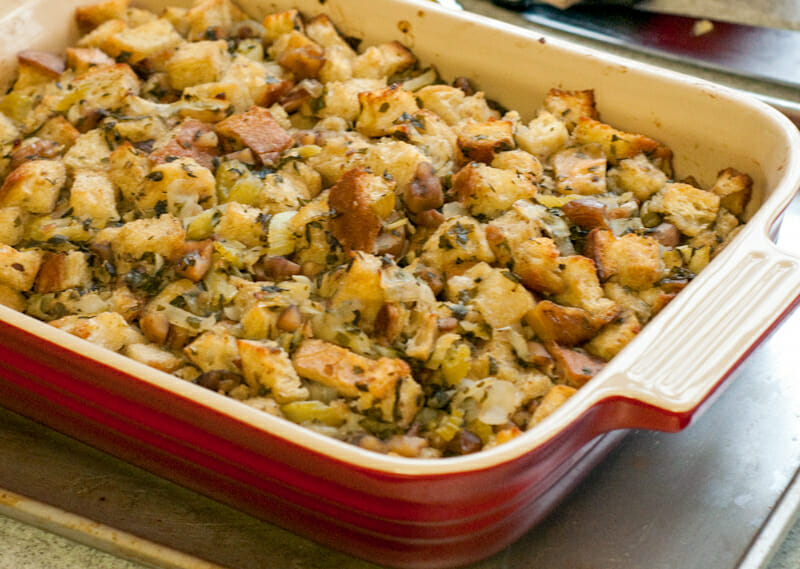
Instructions
Preheat your oven to 350ºF. Cut the sandwich bread into 1″ cubes and set them aside.
In a large, deep skillet, melt butter over low heat. I like to use cast iron. Add the minced onions and chopped celery. Saute until the vegetables are translucent, but don’t let them brown. Add the salt and pepper and fresh sage, and cook until you can smell the sage’s flavor.
Remove the skillet from heat and allow it to cool enough to handle safely. Toss in the bread cubes. Using your hands, make sure all the bread is coated in the mixture. Transfer it to a baking dish from the skillet and pour the stock over it. Bake covered at 350ºF for 30 minutes, uncovering in the last 10 minutes of cooking to let the bread crisp.
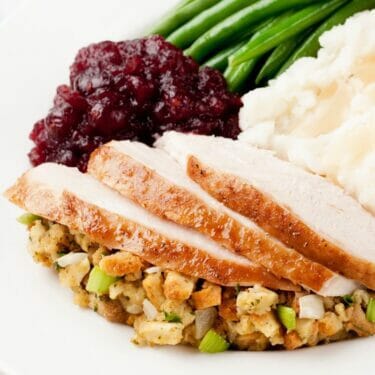
Old-Fashioned Homemade Sage Stuffing
This post may contain paid links. If you make a purchase using the links in this recipe, I may earn a commission.
Ingredients
- 2 loaves Sandwich Bread
- ½ c. Butter
- 1 c. Chicken Stock or veggie stock
- 1 c. Onion minced
- 1 c. Celery chopped
- 5 tbsp. Sage fresh, minced
- 1 tsp. Salt
- 1 tsp. White Pepper or black pepper
Instructions
- Preheat your oven to 350ºF. Cut the sandwich bread into 1" cubes and set them aside.2 loaves Sandwich Bread
- In a large, deep skillet, melt butter over low heat.1/2 c. Butter
- Add the minced onions and chopped celery. Saute until the vegetables are translucent, but don't let them brown.1 c. Onion, 1 c. Celery
- Add the salt and pepper and fresh sage, and cook until you can smell the sage's flavor.1 tsp. Salt, 1 tsp. White Pepper, 5 tbsp. Sage
- Remove the skillet from heat and allow it to cool enough to safely handle. Toss in the bread cubes. Using your hands, make sure all the bread is coated in the mixture.
- Transfer the stuffing from the skillet to a baking dish and pour the stock over it.1 c. Chicken Stock
- Bake covered at 350ºF for 30 minutes, uncovering in the last 10 minutes of cooking to let the bread crisp.
Notes
Nutrition
Cauliflower Soup With Brown Butter
Cauliflower gets remarkably silky when blended, making for a luscious soup. A drizzle of brown butter and crispy sage add depth to each bowl. The recipe can be found at Yes to Yolks.
Pork & Sage Hand Pies
These pork hand pies make great leftovers. Have them for dinner, then freeze the rest for easy meals on the go. The recipe can be found at The Candid Kitchen.
Gnocchi With Butternut Squash
Tender gnocchi tossed with burnt butter is perfectly balanced by sweet butternut squash in this recipe. Add a sprinkle of Parmesan, and you have heaven on a plate. The recipe can be found at Gimmie Some Oven.
Oven Risotto With Spinach, Cauliflower, and Sage
Cooking risotto in the oven gives you creamy results with no stirring. Nutty roasted cauliflower and green spinach round out the dish. The recipe can be found at Drizzle & Dip.
